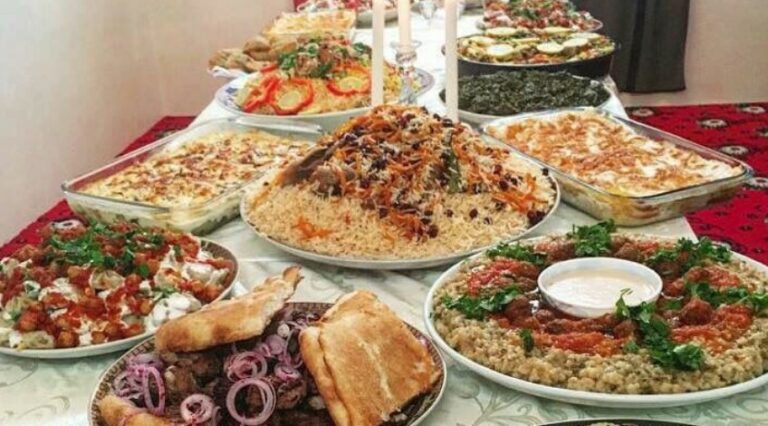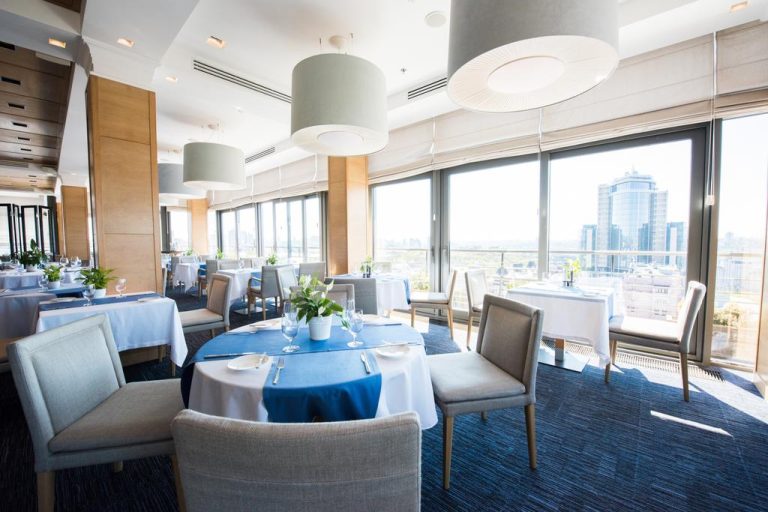Introduction: Afghan Food, a Hidden Gem
Afghanistan may be known for its war-torn history, but its cuisine is a hidden gem waiting to be discovered. Afghan food is a fusion of various regional and cultural influences, resulting in a unique and flavorful cuisine. It is a cuisine that is often overlooked, yet it is rich in tradition and history.
Afghan cuisine is characterized by the use of aromatic spices, bold flavors, and unique cooking methods. Afghan food is hearty, comforting, and reflects the country’s diverse history and culture. While it may not be as well-known as other Middle Eastern cuisines, it is definitely worth exploring.
Afghan Cuisine: A Blend of Influences
Afghanistan’s geographic location has made it a melting pot of different cultures, and this is reflected in its cuisine. Afghan food is a fusion of various regional and cultural influences, including Persian, Indian, Uzbek, Turkmen, and Arab cuisine.
Afghan cuisine is characterized by the use of aromatic spices such as cumin, coriander, and cardamom, and herbs like mint and dill. The use of yogurt, nuts, and dried fruits in dishes is another hallmark of Afghan cuisine. The country’s cuisine also features a wide range of meat dishes, including lamb, beef, and chicken.
Staple Dishes: From Meat to Vegetables
Afghan cuisine is diverse, and it features a wide range of dishes that cater to different tastes and preferences. One of the most popular Afghan dishes is Kabuli Palaw, which is a rice dish made with lamb, raisins, and carrots. Mantu is another popular dish, which is a type of dumpling filled with spiced beef or lamb mince and topped with yogurt and tomato sauce.
Afghanistan has a rich tradition of vegetarian cooking, and the country’s cuisine features a wide range of vegetable dishes. Sabzi, for instance, is a traditional Afghan dish made with spinach, onions, and tomatoes. It is typically served as a side dish with bread and rice.
Afghan Spices: Aromatic and Flavorful
Afghan spices are an essential component of the country’s cuisine. They add depth of flavor, aroma, and color to dishes. Some of the most commonly used spices in Afghan cooking are cumin, coriander, cardamom, cinnamon, and chili powder.
The use of spice blends like garam masala and ras el hanout is also common in Afghan cuisine. These spice blends vary depending on the region and the dish being prepared. Some popular spice blends in Afghan cuisine include Advieh, which is a blend of cinnamon, cardamom, and rose petals, and Baharat, which is a blend of cinnamon, cumin, and coriander.
Popular Desserts: Sweet Delights of Afghanistan
Afghanistan has a sweet tooth, and the country’s cuisine features a wide range of desserts. Some of the most popular desserts in Afghan cuisine include Sheer Yakh, which is a creamy ice cream made with rosewater and pistachios, and Firni, which is a creamy rice pudding flavored with cardamom and topped with nuts.
Another popular dessert in Afghan cuisine is Jalebi, which is a deep-fried pastry soaked in syrup. It is typically served during special occasions and celebrations like Eid and weddings.
Tea Culture: An Integral Part of Afghan Food
Tea is an integral part of Afghan food culture. The country’s tea culture is centered around green tea, which is typically served with sugar cubes and cardamom. Tea is often served as a sign of hospitality and is an important part of Afghan social gatherings.
Tea is also used to wash down meals and aid digestion. It is typically served in small glasses and is enjoyed throughout the day.
Eating Habits: Celebrating Food with Family and Friends
Food is an important part of Afghan culture, and meals are often a time for family and friends to come together. Afghan meals are typically served family-style, with dishes placed in the center of the table for everyone to share.
Eating with your hands is also common in Afghan cuisine, and bread is used to scoop up food. This communal style of eating reflects the country’s tradition of hospitality and generosity.
Afghan Hospitality: Sharing Food and Tradition
Afghan cuisine is more than just food; it is a reflection of the country’s culture and tradition. Hospitality is a core value in Afghan culture, and sharing food is seen as a way to honor guests and strengthen relationships.
Afghan hospitality is characterized by generosity, warmth, and a welcoming attitude towards guests. It is common for Afghan households to prepare elaborate meals when guests are expected, and sharing food is seen as a way to connect with others and build community.







